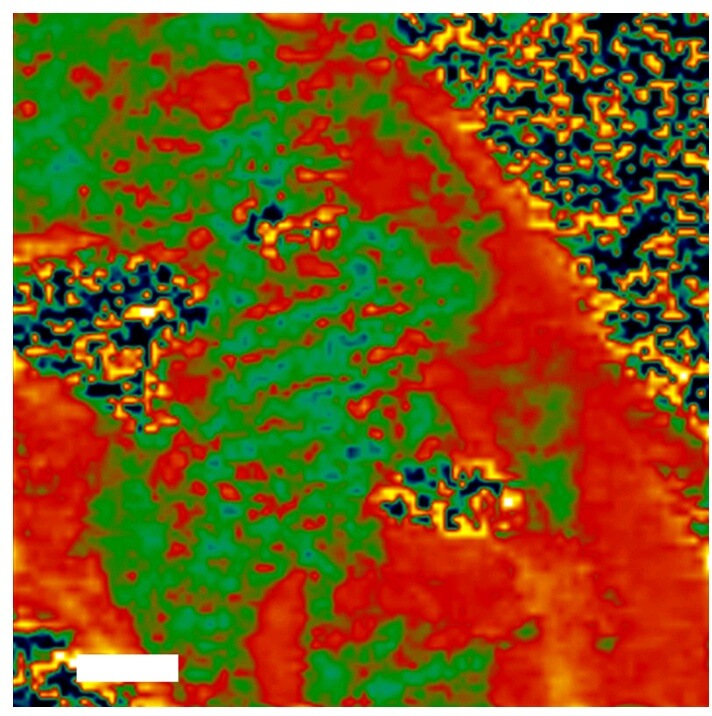A research team led by chemists from the University of Buffalo was able to observe the "clouds" of electrons found on the surface of the material graphene

A research team led by chemists from the University of Buffalo was able to observe the "clouds" of electrons found on the surface of the material graphene, while obtaining images showing how the folds present in it could damage its electrical conductivity.
Graphene, the thinnest and strongest material known to man, consists of a single layer of carbon atoms arranged in hexagonal honeycomb structures. The unique structure of graphene makes it an extraordinary conductive material: under optimal conditions, when the graphene is completely flat, an electric charge passes through it without encountering any obstacle (that is, it has zero electrical resistance), said one of the authors of the article about the study published in the scientific journal Nature Communications. However, the conditions are not always optimal.
The new images obtained show that when the graphene is folded or bent, the electron cloud surrounding its surface also becomes curved and makes it difficult for the electric charge to move through it efficiently. "When the graphene is completely flat, the charge simply "floats" along the cloud and it doesn't have to jump over anything, similar to driving on the freeway," explains the researcher. "However, if you bend the graphene, it now has several obstacles; Imagine the difference between a newly paved highway and a road where maintenance work is being carried out that requires you to take detours. "The electron cloud can be imagined as a large downy pillow with the pillow bent at several points," explains the researcher.
In order to obtain the images, the researchers used two advanced measurement methods that involve the use of special microscopes, and with the help of computer simulations. "Through the simulations, we are able to better understand the measurements made by our colleagues using X-ray beams, and make better predictions about the effects of small changes in the structure of graphene on its electronic properties," said the lead researcher. "We saw that there are certain areas of graphene with slopes at different angles, like looking down at the sloping roofs of many houses close together."
Beyond documenting that folds in graphene destroy the uniformity of its electron cloud, the research team discovered that impurities that stick to graphene during its processing remain in the niches found in the non-uniform areas of the material. These impurities distort the electron cloud and thus change the strength of its binding to the carbon atoms.
Graphene's extraordinary properties have generated enormous excitement in a variety of industries, such as computers, energy, and defense. Scientists claim that graphene's electrical conductivity is equal to that of copper, and that graphene's thermal conductivity is the best known today. However, the new research suggests that companies hoping to incorporate graphene into products such as conductive ink, ultra-fast transistors and solar panels would benefit from basic research into the nanomaterial.
Improved processes for turning flat sheets of graphene into commercial products could significantly increase product efficiency. "Many scientists now know how to produce graphene, but it is still not fully clear how to convert it into another product without folding it on itself," explains the researcher. Keeping the sheet straight and flat is a serious challenge, and our research begins to explain why this feature is so important."
The news about the study

One response
Is it possible to expand on the measurement methods?